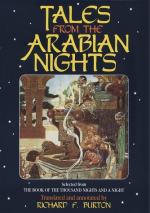[FN#399] Pandit S. M. Natesa Sastri, in “Indian Notes and Queries,” for March, 1887, says that women swallow large numbers of an insect called pillai-puchchi (son-insect: gryllas) in the hope of bearing sons, they will also drink the water squeezed from the loin-cloth of a sanyasi [devotee] after washing it for him!—Another correspondent in the same periodical. Pandit Putlibai K. Raghunathje, writes that Hindu women, for the purpose of having children, especially a son, observe the fourth lunar day of every dark fortnight as a fast and break their fast only after seeing the moon, generally before 9 or 10 p.m. A dish of twenty-one small, marble-like balls of rice is prepared, in one of which is put some salt. The whole dish is then served up to the woman, and while eating it she should first lay her hands on the ball containing salt, as it is believed to be a positive sign that she will be blessed with a son. In that case she should give up eating the rest, but otherwise she should go on eating till she lays her hands on the salted ball. The Pandit adds, that the observance of this ball depends on the wish of the woman. She may observe it on only one, five, seven, eleven, or twenty-one lunar fourth days, or chaturthi. Should she altogether fail in picking out the salted ball first, she may be sure of remaining barren all her life long.
[FN#400] I am glad to see among Messrs. Trubner & Co.’s announcements of forthcoming publications Mr. Knowles’ collection of “Folk-Tales of Kashmir” in popular handy volume form.
[FN#401] A holy man whose austerities have obtained for him supernatural powers.
[FN#402] Also called “Story of the King and his Four Ministers.” There is another but wholly different Tamil romance entitled the “Alakesa Katha,” in which a king’s daughter becomes a disembodied evil spirit, haunting during the night a particular choultry (or serai) for travellers, and if they do not answer aright to her cries she strangles them and vampyre-like sucks their blood.
[FN#403] The Pandit informs me that his “Folk-Lore in Southern India” will be completed at press and issued shortly at Bombay. (London agents, Messrs. Trubner & Co.)
[FN#404] In the “Katha Sarit Sagara,” Book ii., ch. 14, when the King of Vatsa receives the hand of Vasavadatta, “like a beautiful shoot lately budded on the creeper of love,” she walks round the fire, keeping it to the right, on which Prof. Tawney remarks that “the practice of walking round an object of reverence, with the right hand towards it, has been exhaustively discussed by Dr. Samuel Fergusson in his paper ’On the ceremonial turn called Desiul,’ published in the Proceedings of the Royal Irish Academy, for March 1877 (vol. i., series ii., No. 12). He shows it to have existed among the ancient Romans as well as the Celts.... Dr. Fergusson is of opinion that this movement was a symbol of the cosmical rotation, an imitation of the apparent course of the sun in the heavens.”




